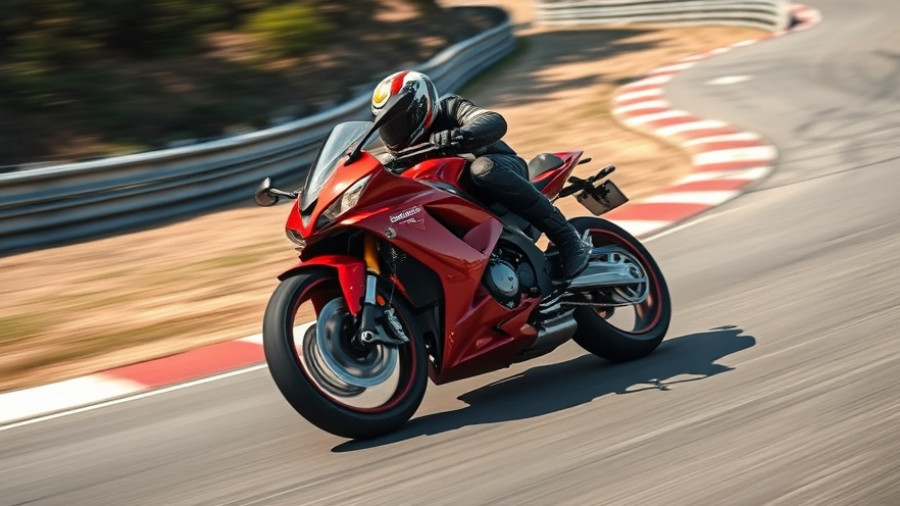
The New Era of Luxury SUVs: Introducing the 2027 Mercedes-Benz GLC 400 4MATIC
The automotive landscape is witnessing an electrifying transformation, particularly among luxury SUVs. The 2027 Mercedes-Benz GLC 400 4MATIC is positioned to make a significant statement with its EQ technology, offering not just an eco-friendly ride but also an enhanced driving experience. Competing directly with the freshly unveiled BMW iX3, this all-electric model boasts a potent 800-volt architecture that promises remarkable performance and efficiency. As consumers become increasingly conscientious about carbon footprints, luxury car manufacturers are compelled to innovate in ways that merge sustainability with opulence.
What's New: A Design Revolution
Mercedes-Benz has taken the feedback from its previous EQ models seriously. The GLC 400 sports a refined and aerodynamic silhouette, achieved with a drag coefficient of just 0.26. This meticulous design isn't just for aesthetics; improved aerodynamics contribute to the vehicle's efficiency. Key design features include a state-of-the-art illuminated grille and striking two-piece taillights that animate as the vehicle charges or locks. These touches enhance the GLC's visual appeal while maintaining its iconic luxury essence.
Interior Comfort Meets Cutting-Edge Technology
Inside the GLC 400, technology reigns supreme. The available 39.1-inch MBUX Hyperscreen stretches across the dashboard, integrating three distinct displays under a single glass pane. The latest iteration of Mercedes' MBUX system operates on the advanced Unity game engine, raising the bar for interactivity with a more intuitive AI assistant that facilitates everything from navigation to productivity tasks, like scheduling Zoom meetings via Teams. For audiophiles, an upgrade to the Burmester 3D or 4D sound system with Dolby Atmos creates an immersive listening experience that is further enhanced by haptic feedback through body transducers embedded in the seats.
Wellness and Comfort Redefined
The push for well-being in vehicles is gaining momentum, and the GLC 400 doesn't shy away from this trend. The standard full-length glass roof employs infrared coatings to keep the cabin cool, ensuring passengers remain comfortable regardless of outside temperatures. For an exceptional experience, options like the Sky Control feature allow segments of the roof to switch between transparent and opaque, adjusting to the preferences of those inside. With unique features like guided relaxation programs and an ambient lighting system that syncs with audio playback, Mercedes aims to offer more than just a ride—it’s a holistic experience.
The Future of Electric Luxury: Impact and Insights
As the automotive industry shifts gears towards electric vehicles (EVs), the GLC 400 serves as a bellwether for future trends. This model's introduction represents a larger movement within the auto industry to prioritize sustainability without sacrificing luxury. Other manufacturers are sure to follow suit, leveraging advancements in technology to elevate their offerings. Given that EV technology is continually evolving, consumers can anticipate more innovations in terms of range, charging speed, and overall user experience in forthcoming models.
Competitive Landscape: Mercedes-Benz vs. The Others
With its ambitious entry into the electric luxury SUV market, Mercedes-Benz solidifies its standing among the largest automobile manufacturers in the world. As they compete with strong players like Tesla and BMW, the introduction of new models such as the GLC 400 will define market trends. Industry analysts predict that these developments could reshape consumer preferences, making electric SUVs not just a choice but a necessity among affluent buyers looking to combine luxury with environmental concern.
Conclusion and Next Steps: What to Expect
The 2027 Mercedes-Benz GLC 400 4MATIC is a pivotal addition to the luxury electric vehicle segment, encapsulating the blend of high performance and contemporary design that discerning buyers seek. With its array of innovative features and commitment to sustainability, it positions itself as a top contender amidst growing competition. If you're in the market for a cutting-edge luxury SUV that doesn't compromise on style or functionality, consider following industry developments closely—especially as Mercedes and others continue to push the envelope for what's possible in the realm of electric transportation.
 Add Row
Add Row  Add
Add 




Write A Comment